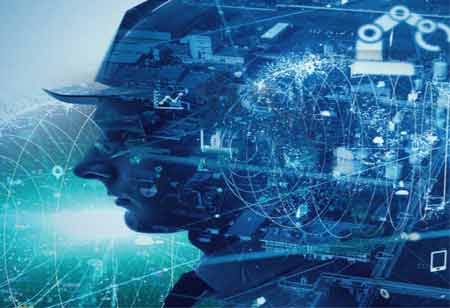Thank you for Subscribing to Electrical Business Review Weekly Brief
I agree We use cookies on this website to enhance your user experience. By clicking any link on this page you are giving your consent for us to set cookies. More info
Empowering Electrical Infrastructures: The Evolution of Wire and Cable Solutions
In the dynamic world of electrical engineering, the backbone of every power distribution and communication network lies in the wires and cables that connect the modern world.

By
Electrical Business Review | Tuesday, July 25, 2023
Stay ahead of the industry with exclusive feature stories on the top companies, expert insights and the latest news delivered straight to your inbox. Subscribe today.
Wire and cable solutions serve as the lifelines of electrical systems, facilitating the transmission of electricity, data, and signals across vast distances.
FREMONT, CA: In the dynamic world of electrical engineering, the backbone of every power distribution and communication network lies in the wires and cables that connect the modern world. As technologies advance and electrical demands grow, wire and cable solutions have evolved to meet the challenges of efficiency, reliability, and sustainability. This article explores the significance of wire and cable solutions in the electrical industry, highlighting their innovations, applications, and role in powering the future.
The Backbone of Electrical Infrastructures
Wire and cable solutions serve as the lifelines of electrical systems, facilitating the transmission of electricity, data, and signals across vast distances. They are important components in a wide range of applications, including power distribution, telecommunications, transportation, renewable energy, and industrial automation. As the demand for faster and more reliable electrical connections continues to grow, the evolution of wire and cable solutions has become pivotal in supporting global advancements.
Innovations in Wire and Cable Technology
1. High-Temperature Resistance: Innovations in materials and manufacturing processes have led to the development of wires and cables capable of withstanding higher temperatures. These advanced cables are crucial in power generation and aerospace applications, where heat resistance is critical.
2. High-Performance Insulation: Enhanced insulation materials have improved the safety and durability of wires and cables, preventing electrical leakage and reducing the risk of fire hazards.
3. Fiber Optic Cables: The rise of digital communication and data transfer demands has driven the development of high-speed fiber optic cables. These cables offer unparalleled data transmission rates, making them essential in telecommunications and internet connectivity.
4. Eco-Friendly Solutions: The electrical industry is moving towards eco-friendly wire and cable solutions, utilizing recyclable materials and reducing the use of hazardous substances to enhance sustainability.
Applications in Diverse Industries
1. Power Distribution: In power generation, transmission, and distribution, high-voltage cables ensure the efficient delivery of electricity from power plants to consumers, supporting stable electrical grids.
2. Telecommunications: Fiber optic cables play a crucial role in global communications, enabling rapid and secure data transmission for internet, telephony, and multimedia applications.
3. Renewable Energy: Specialized cables are used in solar and wind energy installations, connecting renewable energy sources to the power grid and supporting the transition to sustainable energy solutions.
4. Industrial Automation: Cables designed for harsh industrial environments facilitate automated processes, improving efficiency and productivity in manufacturing and logistics industries.
The Role of Wire and Cable Solutions in the Future
1. Smart Grids: As electrical grids evolve into smart grids, wire and cable solutions will play a key role in enabling two-way communication between utilities and consumers, optimizing energy consumption, and integrating renewable energy sources.
2. Electrification of Transportation: The growing demand for electric vehicles necessitates advanced charging infrastructure, requiring high-capacity cables to support rapid charging stations and electric vehicle networks.
3. Internet of Things (IoT): In the era of IoT, wire and cable solutions will connect an increasing number of devices, sensors, and smart appliances, creating interconnected networks for smart homes and smart cities.
Conclusion
Wire and cable solutions have come a long way since the early days of electrical engineering, transforming the way we transmit electricity, data, and information across the globe. From powering homes and industries to connecting individuals through seamless communication, wire and cable solutions are indispensable in today's interconnected world. As technology advances and sustainability becomes a top priority, the continuous evolution of wire and cable solutions will drive the progress of electrical infrastructures, supporting a future powered by efficiency, reliability, and sustainability.








